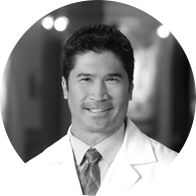
In his book The One Thing: The Surprisingly Simple Truth Behind Extraordinary Results, Gary Keller asks readers to think about the one thing they can do this week that would make everything else easier or unnecessary. Whether big or small, Keller says, extraordinary results are directly determined by the scope of your focus. This made me ponder not only how this concept relates to me personally, but also how it relates to eye care, specifically optometry and ophthalmology. Aside from patient care, I feel that the other one thing that optimizes our care and services is our ability to communicate—whether with our patients, with our care teams, or with our colleagues. Successful collaboration is the result of continuous communication with all stakeholders within our practice.
In the cataract patient’s journey, communication and education are key because it is important for the patient to fully understand his or her condition as early as possible, ideally at the time of initial diagnosis. Patients may not be ready for surgery at this point, but we can begin the education process by letting them know what their condition is, why they have it, what we can do about it, when to have surgery, who to go to for surgery, and what to expect afterwards. This way, when it is time for surgery, our patients will be prepared to make this once-in-a-lifetime decision. The more informed our patients are, the more satisfied they will be with their results.
Communication between providers and care teams is just as important as communication between providers and patients. Making initial recommendations to the surgeon based on a particular patient’s wants, needs, and desires influences the final decision on what is best for that patient. From preoperative considerations to the surgical procedure to postoperative care, it is important that optometrists and ophthalmologists communicate and understand their respective roles in delivering excellent patient outcomes.
The CollaborativeEYE section in this issue takes a close look at one of the most common areas that bridge our professions together, cataract surgery. As our patient population matures, we will see an increased demand not only for cataract collaboration and care, but also for the same in glaucoma, macular degeneration, diabetes, and other conditions. We will tackle these other topics in the future, but for now, once you’ve read the CollaborativeEYE articles in this issue on cataract surgery, I challenge you to implement some of the thoughts and ideas presented into your daily practice and to continuously work to improve on this one thing: that is, communication.



